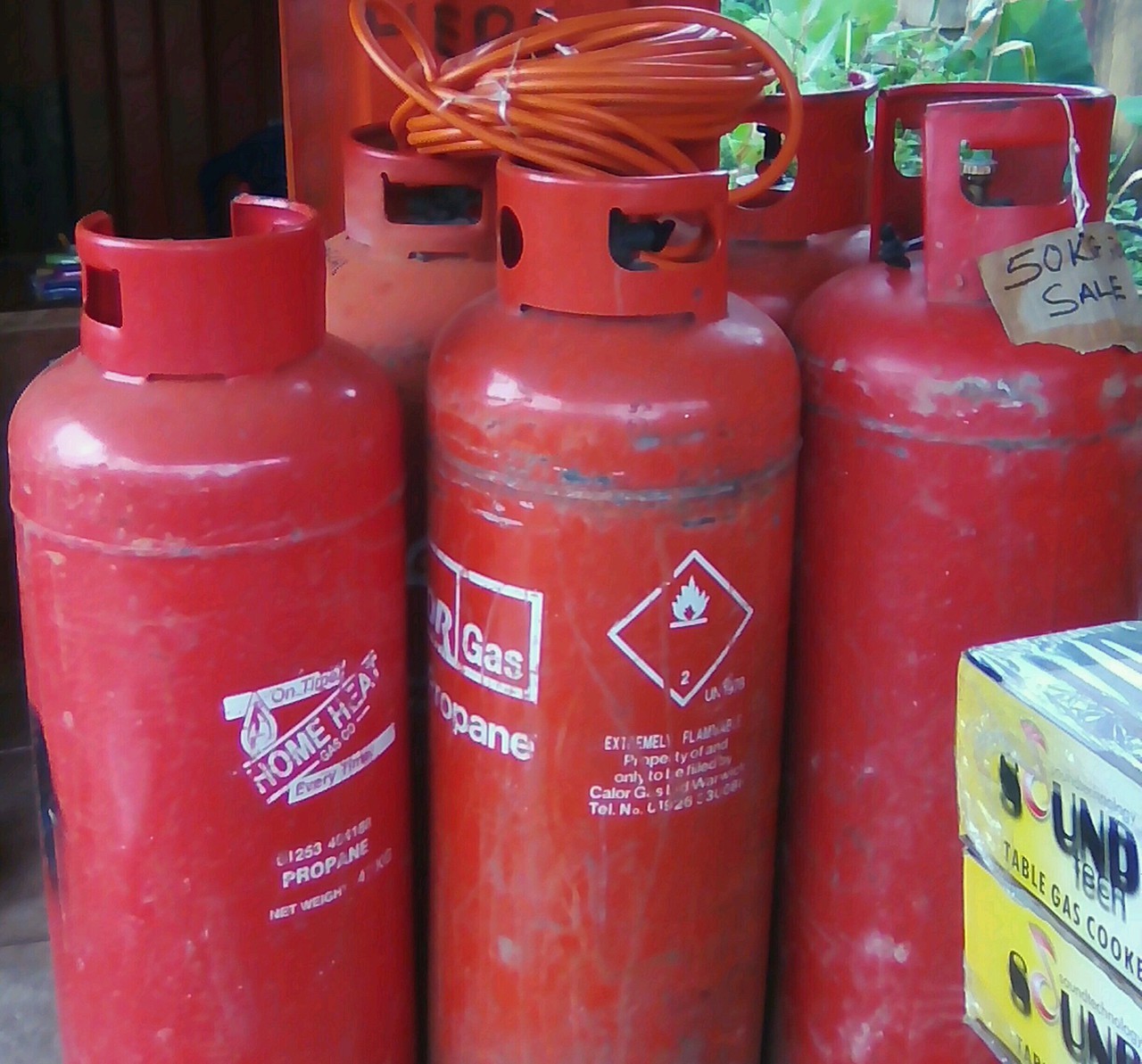22 Danger Signs To Watch Out For When Using A Gas Cylinder
Posted by Samuel on Sat 22nd Feb, 2020 - tori.ng
File photo: Gas cylinders
There have been many cases of gas cylinder explosions and when this happens, lives are lost and properties worth millions are destroyed.
However, there are so many danger signs we need to look out for while using a Gas cylinder.
Some of these factors are:
* Cooking gas cylinders must not exceed five years: most people using gas cylinders hardly remember when it was bought. It is important to keep track of the days and replace them as soon as possible.
* Do not buy used Gas cylinders.
* Watch out for the expiry dates: The steps to check the expiry date are very simple and basic. The expiry of LPG cylinder can be found on one of the metal strips that connect the body of the cylinder to top ring (handle). It is mentioned on the inner side of the strip. The strip has any of the alphabets from A to D painted on it along with a number. Decoding the expiry date is simple. The alphabet represents the month it expires while the number indicates the year. A year is divided into four quarters :
A – January to March
B – April to June
C – July to September
D – October to December
For example, your cylinder has ‘A 18 painted on the metal strip. The alphabet A represents month March and 18 indicates the year 2018.
* Use gas cylinders in a vertical position, unless specifically designed to be used otherwise
* Securely restrain cylinders to prevent them from falling over
* Always double check that the cylinder/gas is the right one for the intended use.
* Before connecting a gas cylinder to equipment or pipe-work make sure that the regulator and pipe-work are suitable for the type of gas and pressure being used.
* When required, wear suitable safety shoes and other personal protective equipment when handling gas cylinders.
* Do not use gas cylinders for any other purpose than the transport and storage of gas.
* Do not drop, roll or drag gas cylinders.
* Close the cylinder valve and replace dust caps, where provided when a gas cylinder is not in use.
* Where appropriate, fit cylinders with residual pressure valves (non-return valves) to reduce the risk of backflow of water or other materials into the cylinder during use that might corrode it (e.g. beer forced into an empty gas cylinder during cylinder change-over).
* Ensure the valve is protected by a valve cap or collar, or that the valve has been designed to withstand impact if the cylinder is dropped.
* Store gas cylinders in a dry, safe place on a flat surface in the open air. If this is not reasonably practicable, store in an adequately ventilated building or part of a building specifically reserved for this purpose.
* Cylinders containing flammable gas should not be stored in part of a building used for other purposes.
* Protect gas cylinders from external heat sources that may adversely affect their mechanical integrity.
* Gas cylinders should be stored away from sources of ignition and other flammable materials.
* Avoid storing gas cylinders so that they stand or lie in water.
* Ensure the valve is kept shut on empty cylinders to prevent contaminants from getting in.
* Store gas cylinders securely when they are not in use. They should be properly restrained unless designed to be free-standing.
* Gas cylinders must be clearly marked to show what they contain and the hazards associated with their contents.
* Store cylinders where they are not vulnerable to hazards caused by impact, e.g. from vehicles such as fork-lift trucks.
***
Source: The Nation






















































